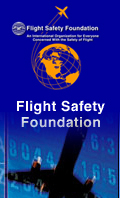Flight crew are constantly changing time zones, causing an imbalance in their circadian rhythms and resulting in potentially lasting health problems. Varsha Saraogi investigates the risks involved, current guidelines and what airline companies can do.

Midnight departures, early morning arrivals and adjusting to several time zones in a matter of days disturbs people's circadian rhythms -also known as the body clock - narrowing attention spans and disrupting the ability to be vigilant. These are the very conditions many pilots and cabin crew face daily as they contend with a technically challenging job where, in the worst-case scenario, hundreds of lives may be at stake.
As NHS community mental health centre's assistant psychologist Ipek Ahmet puts it: "The potential safety repercussions of heavily sleep-disrupting night flights cause physical and mental exhaustion in pilots and flight attendants. That impairs their ability to perform their duties and safely operate an aircraft, putting passengers in danger."
Ahmet stresses that fatigue-related performance problems in aviation "have been consistently underestimated, despite the known fact that insufficient sleep significantly lowers basic cognitive performance and fundamental piloting skills".
Human error is associated with up to 80% of aviation accidents and pilot fatigue contributes to 15%-20% of all fatal air disasters, according to a study by the European Aviation Safety Agency (EASA). The study states the main causes of fatigue to be "night flights" and "disruptive schedules".
"Humans are creatures of habit when it comes to time," says Ahmet. "Our internal timer is set to a 24-hour clock and when that is altered or ignored, it will have physiological and behavioural impact causing circadian rhythm disruption, or CRD - commonly referred to as jet lag."
Risks caused by lack of sleep
"Inconsistent resting hours and an imbalanced circadian cycle puts flight attendants at a higher risk of getting various types of cancers."
Alongside reduced ability to focus, fatigue and long working hours put flight crew at risk of other physical issues.
Citing a study by The National Institute for Occupational Safety and Health (NIOSH), Ahmet says that for pregnant flight attendants, working 15 hours or more during the first trimester is linked to increased risk of miscarriage.
"Menstrual irregularities are well-known in female crew members who work on repeated long-haul flights," she adds.
Furthermore, inconsistent resting hours and an imbalanced circadian cycle put flight attendants at a higher risk of getting various types of cancers, according to a report published in Environmental Health by researchers at the Department of Environmental Health as well as Biostatistics at Harvard. According to the report, flight staff are 74% more likely to suffer from stomach, skin or breast cancer compared to those working on the ground.
What industry regulations say
"For European pilots, the total duty period should not exceed 60 hours in any seven consecutive days."
The EASA - which is responsible for ensuring aviation safety across Europe - published an updated version of Flight Time Limitations (FTL) in 2014 for pilots and flight crew, taking into account scientific and medical evidence regarding fatigue.
For European pilots, it prescribed the total duty period should not exceed 60 hours in any seven consecutive days and 190 duty hours in any 28 consecutive days.
Furthermore, the total flight time which an individual crew member is assigned cannot exceed 100 flight hours in any 28 consecutive days and 900 flight hours in any calendar year.
With respect to the rest period, pilots need 12 hours rest or the length of the preceding duty if it was more than 12 hours. For instance, if a pilot was on duty for eight hours, they would need 12 hours rest, but if they were on duty for 16 hours, they should get a 16-hour rest-period.
However, regulations differ in every region. While the EASA mandated a maximum of 12.45 continuous duty hours for a late-afternoon departure - with no breaks and an overnight flight duty limit of 11 hours, the Civil Aviation Authority (CAA)'s current overnight flight duty limit is 10.5 hours. Both compare unfavourably with the regulatory regime in the US, where the Federal Aviation Authority has a nine-hour overnight duty period.
While regulators have capped duty hours to ensure flight staff is not overworked, Ahmet notes that it is not the complete solution.
"Airlines and regulators have tried to address the fatigue problem by focusing only on-duty hours rather than focusing on the physiological factors that are truly responsible," Ahmet opines.
Mitigating fatigue during short and long-haul flights
"The main fatigue mitigation strategy is to provide the crew with scheduled in-flight rest breaks for sleep in crew rest facilities."
To help aviation companies tackle the issue, regulators have prescribed a list of tasks for flight crew working in varying time zones. They include getting plenty of sunlight, daytime awareness and minimising alcohol and caffeine consumption to prevent dehydration.
In terms of long-haul flights and layovers away from home, flight crew should not attempt to acclimatise themselves to the local time, according to the International Civil Aviation Organization (ICAO)'s Manual of Civil Aviation Medicine. It said that the entire crew must "remain on home time", "maintain a routine that is aligned to the time at home rather than to try and adapt to local time" so they can function better when they get back.
Despite the solutions given by the various regulators, Ahmet says that better strategies must be implemented keeping cabin crew in mind - who are required to be awake more often than flight crew.
"The main fatigue mitigation strategy is to provide the crew with scheduled in-flight rest breaks for sleep in crew rest facilities," she says. "However, all cabin crew are required to be awake during meal services, so they have less time available for in-flight rest compared to flight crew."
Along with better rest schedules, crew members should be educated on sleep hygiene "so they can snag some rest before duty or during layovers," Ahmet adds.
In addition to training, Ahmet suggests that exercise will significantly help in resetting the body clock. "It's surprising how some jumping jacks, sit-ups, push-ups and handstands can make staff with CRD better," she adds.
Finally, aviation companies must also capitalise on technology to ensure their crew operates more efficiently.
"Given that modern technologies are being rolled out in most aviation operations, wearable sleep-tracking technologies should be utilised to actually measure the pre-duty and layover sleep of flight crews so that they can better manage and optimise their own sleep," Ahmet concludes.
https://www.airport-technology.com/features/airline-crew-body-clock/





 02-11 еӮ»зңјз©әжӢҚж©ҹпјҢ ж°‘иҲӘеұ...
02-11 еӮ»зңјз©әжӢҚж©ҹпјҢ ж°‘иҲӘеұ...







